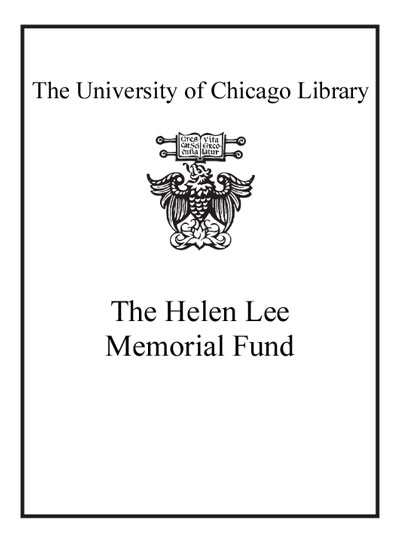Poiesis : manufacturing in classical Athens /
Saved in:
| Author / Creator: | Acton, Peter Hampden. |
|---|---|
| Imprint: | Oxford : Oxford University Press, [2014] |
| Description: | xviii, 384 pages ; 25 cm |
| Language: | English |
| Subject: | |
| Format: | Print Book |
| URL for this record: | http://pi.lib.uchicago.edu/1001/cat/bib/10140019 |
Table of Contents:
- List of Figures, Illustrations, and Tables
- Foreword
- Acknowledgments
- 1. Introduction
- 1.1. Athens, the Manufacturing City
- 1.2. Original Sources
- 1.2.1. Ancient Literature
- 1.2.2. Archaeology and Epigraphy
- 1.3. Methodology
- 1.3.1. Embeddedness and Empirical Analysis
- 1.3.2. Theories of Firm Size
- 1.3.3. The Theory of Competitive Advantage
- 1.3.4. Competitive Advantage and Industry Structure
- 1.3.5. Applying the Competitive Advantage Framework
- 2. Industry Formation
- 2.1. Early Manufacutring
- 2.2. Homer and the Households of the Rich
- 2.3. Hesiod and the Peasant Economy
- 2.4. Empirical Evidence
- 2.4.1. Metalworking
- 2.4.2. Leatherwork
- 2.4.3. Cosmetics and Perfumes
- 2.4.4. Textiles
- 2.5. Supply and Demand in a Competitive Market
- 3. The Pottery Industry
- 3.1. The Evidence
- 3.1.1. Original Texts
- 3.1.2. Pots
- 3.1.3. Potteries and Kilns
- 3.1.4. Stamps and Graffiti
- 3.1.5. Vase Paintings
- 3.2. Industry and Workshop Size
- 3.3. Labor Force
- 3.3.1. The Process of Making Pots
- 3.3.2. Staffing Needs
- 3.3.3. Justifying a Full-Time Team
- 3.4. Bases for Differentiation
- 3.4.1. Fine Ware
- 3.4.2. Coarse Ware
- 3.4.3. Niche Products
- 3.4.4. A Second Kiln?
- 3.5. Subsequent Changes in Competitive Dynamics and Industry Structure
- 3.6. Summary
- 4. Mining, Metals, and Armor
- 4.1. Mining
- 4.2. Ore Processing
- 4.3. General Metalworking
- 4.4. Jewelry and Ornaments
- 4.5. Coinage
- 4.6. Bronze Armor
- 4.7. Shield Manufacture
- 4.8. Knives
- 4.9. Summary
- 5. Textiles, Clothing, and Footwear
- 5.1. Textiles and Clothing
- 5.1.1. Spinning and Weaving
- 5.1.2. Souring and Finishing
- 5.2. Footwear
- 5.2.1. Tanning
- 5.2.2. Shoemaking
- 5.3. Summary
- 6. Woodworking
- 6.1. Furniture
- 6.2. General and Specialized Woodworking Segments
- 6.3. Boatbuilding
- 6.3.1. Thee Trireme: Development and Configuration
- 6.3.2. Responsibility for Building Triremes
- 6.3.3. Manufacturing: the Hull
- 6.3.4. Manufacturing: Components
- 6.3.5. Shipbuilding and Supplying Industries
- 6.4. Summary
- 7. Construction Industries
- 7.1. Public Buildings
- 7.2. Monumental Statues
- 7.3. Private Housing and Infrastructure
- 7.4. Summary
- 8. Food, Drink, and Personal Care
- 8.1. Agricultural Products
- 8.1.1. The Athenian Diet
- 8.1.2. Processing
- 8.1.3. Food Service
- 8.2. Cosmetics, Perfumes, and Medicines
- 8.3. Summary
- 6. Athens's Manufacutures
- 9.1. Citizen Investors
- 9.2. Citizen Craftsmen
- 9.3. Women
- 9.4. Foreign Residents
- 9.5. Slaves
- Coda
- Athenian Currency
- Appendix: Quantifying Manufacturing Participation
- A.1. Supply Analysis
- A.2. Demand Analysis
- A.2.1. Example One: Clothing (Chapter 5)
- A.2.2. Example Two: Shoes (Chapter 5)
- A.2.3. Example Three: Basic Furniture (Chapter 6)
- A.2.4. Example Four: Ceramics (Chapter 3)
- Secondary Sources
- Photo Credits
- Index Locorum
- General Index

